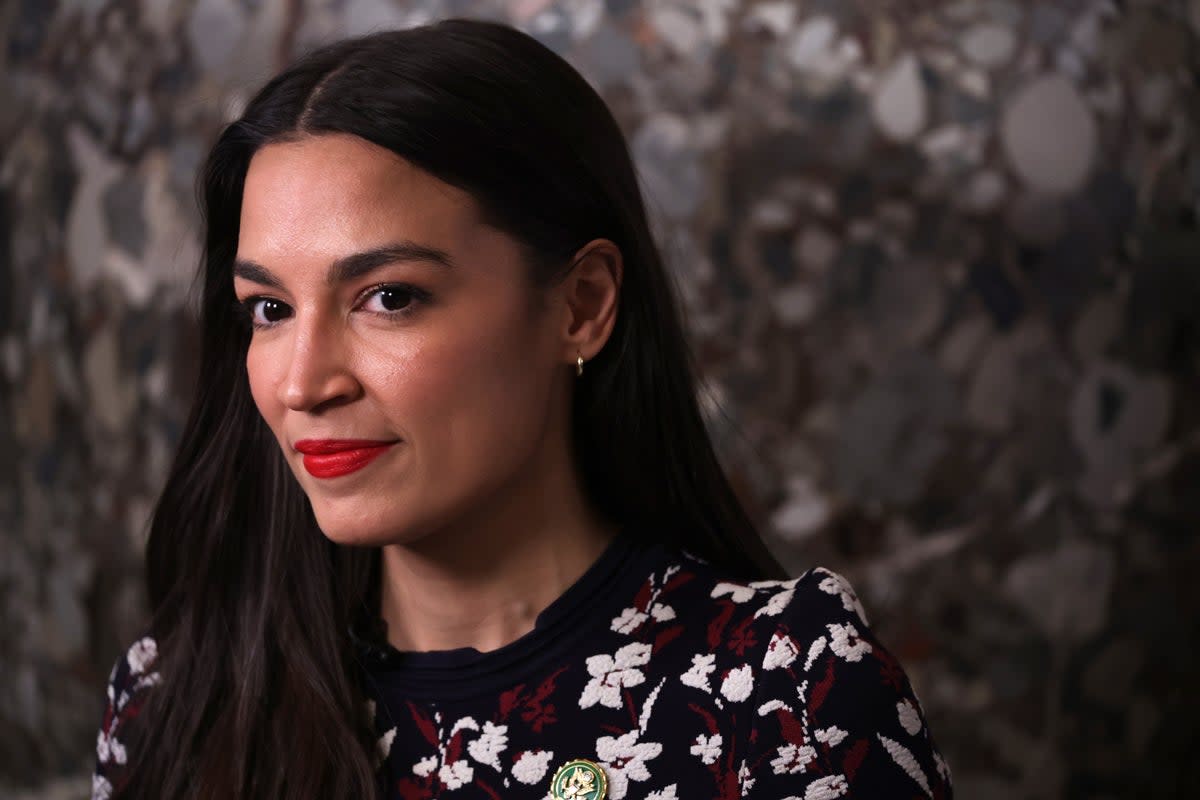Voices: AOC just proved Twitter has changed its rules

- Oops!Something went wrong.Please try again later.
- Oops!Something went wrong.Please try again later.
Conservatives held hearings this week intended to show that Twitter was biased against conservatives. Instead, Rep Alexandria Ocasio-Cortez, in a series of pointed questions, showed that Twitter had literally changed its terms of service in order to avoid deleting a racist tweet by Donald Trump.
More sweepingly, Ocasio-Cortez’s questions showed how the right uses free speech absolutism to stifle free expression. When Republicans claim to be fighting censorship, they are in fact attempting to use government power to intimidate and control the press. This isn’t just hypocrisy. It’s deliberate Orwellian manipulation.
The Republican-controlled House Oversight and Accountability Committee launched its hearings to investigate whether Twitter inappropriately suppressed links to a story about Hunter Biden’s laptop in October 2020. Twitter initially believed the story was disinformation, similar to 2016 stories about leaks from the DNC. It turned out the DNC was hacked by Russia as part of an effort to throw the election to Donald Trump.
Twitter lifted the link ban to the Hunter Biden story after 24 hours, and in retrospect executives said the block was a mistake. They emphasized that it was difficult to distinguish disinformation from legitimate but contentious reporting in the run-up to an election.
It’s important to note that Joe Biden was not president at the time of Twitter’s decision, and Twitter executives say they were not contacted by Biden’s campaign about the matter.
In contrast, there was evidence presented that Trump tried to influence Twitter, and that Twitter bent over backwards to accommodate him.
Donald Trump, while president, contacted Twitter to try to get them to remove a tweet in which model and TV personality Chrissy Teigan called him a ““p**** a** b****,”” on the grounds that the Tweet was derogatory.
Obviously, the Tweet was derogatory. But derogatory speech is still protected by the First Amendment. The president of the United States, under the First Amendment, is not supposed to use his power and influence to try to censor criticism.
Twitter didn’t remove Teigan’s tweet. But they did cater to Trump in other situations.
Ocasio-Cortez asked former Twitter employee Anika Navaroli about a 2019 tweet in which Trump told four Democratic congresswomen of color to “go back” to where they came from – though of course they all are American citizens whose home is the United States. Twitter had a policy against racially inflammatory tweets, which included as an example a tweet telling immigrants and people of color to “go back,” a trope intended to stigmatize people of color and immigrants as un-American outsiders undeserving of rights. Trump’s Tweet, in other words, directly and specifically violated Twitter’s terms of service.
Navaroli flagged the Tweet and suggested that it be deleted. However, she was overruled by Twitter’s vice president of trust and safety, Del Harvey. Twitter’s terms of service were then changed so that telling people to “go back” was no longer an example of racist speech banned on the platform. Rather than delete Trump’s tweet, Twitter decided to alter their terms to allow more racially inflammatory language on the platform.
Ocasio-Cortez concluded that the change showed a right-wing bias on Twitter rather than a left-wing bent. It does. But bias in itself isn’t a free speech issue. Media orgs – like, say, Fox News – can express far-right opinions if they want under the First Amendment.
When media orgs change their editorial stance to avoid confronting those in power, however, it raises questions. Trump often used his platform as president to attack news outlets, instigating a barrage of threats and harassment against individual reporters. Twitter had good reason to fear he might come after the company if they subjected him to their terms. Sure enough, when they started flagging some of his tweets for misinformation, he threatened to pass legislation to destroy the company.
Of course, Trump claimed Twitter was “censoring” him when they deleted his account after he had used the platform to foment the Capitol riot. The right always says it’s being silenced when anyone refuses to broadcast its inciteful rhetoric. Recently, when AT&T dropped Newsmax over a fee dispute, some Republicans claimed it was an act of censorship, and threatened hearings intended to intimidate AT&T into reinstating the network.
But the First Amendment doesn’t mean that anyone must be allowed to say whatever they want from every platform always. The First Amendment is supposed to protect media specifically from government interference. That government interference can involve censorship and removing information, as when Trump tried to get Twitter to delete Chrissy Teigan’s tweet.
But government interference can also mean forcing a company to print government propaganda. If a President Trump tells the New York Times, “You must give me a weekly column, or I will shut you down,” that’s a violation of the First Amendment, as surely as if Trump told the Times it couldn’t print anything critical of him.
Ocasio-Cortez showed how the GOP screams “censorship!” and then uses those screams as a way to implicitly threaten media outlets with reprisals. The House’s nonsense investigation into Twitter is an implicit warning to anyone who demurs from Republican priorities. If you try in good faith to enforce your terms of service, Republicans will come for you as soon as they control Congress.
When the GOP uses its power to intimidate and discipline the press, it’s bound to have a chilling effect on both traditional and social media. This is how cries of “free speech” are used to stifle speech. The right believes everyone should be obligated to broadcast its message, and only its message, all the time. That’s not a brave stand against censorship. It’s authoritarianism.

